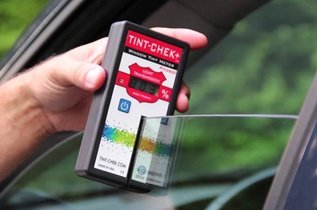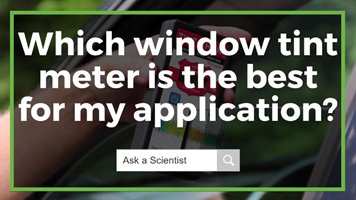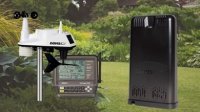How To Test Window Tint Percentage

Window tinting on cars is not just decorative. It serves several functional purposes, including heat reduction, reducing harmful UV rays, enhancing privacy, and preventing upholstery fading. However, there are safety limits on how much tint you can legally apply to your car windows.
This article details how to test your car window’s tint percentage so that you can comply with window tint level regulations.
What is the Tint Darkness Scale?
Professionals use the tint darkness scale to measure Visible Light Transmission. The scale expresses Visible Light Transmission as a percentage (VLT%). When VLT% is “adequate”, authorities judge that a road user has a minimum, safe level of visibility when seated in their car.
Across all states and territories within Australia, it is agreed that passenger vehicles should have no less than 35% visible light transmission through the driver and passenger’s front windows. Some states and territories allow for darker than standard tinting on any windows behind the front passenger. (Note: This information is to be used as a guide only. For each state's regulations, click the state link in the table below).
|
|
Front Side Windows (VLT %) |
Rear Side Windows (VLT %) |
Rear Window (VLT %) |
|
35% |
20% |
20% |
|
|
35% |
35% |
35% |
|
|
35% |
20% |
20% |
|
|
35% |
20% |
20% |
|
|
35% |
15% |
15% |
|
|
35% |
20% |
20% |
|
|
35% |
20% |
20% |
|
|
35% |
20% |
20% |
How To Test Window Tint Percentage
The best way to test window tint percentage is by using a tint meter. (It’s good to know that law enforcement officers and tint installers use tint meters to measure whether a vehicle's window tint percentage is safe).
How Do Tint Meters Work?
You place the glass you wish to measure inside of the tint meter. A light of a known frequency (usually ~550nm) then passes through the medium. Depending on the type of tint meter, on the other side of the glass, there will be either a:
- Sensor to catch the light and calculate the reduction in light strength; or a
- Reflector to return the light to a sensor located in the main unit. The sensor will calculate the reduction in light strength.
The tint meter will automatically display your result as a percentage of visible light transmission on an LCD screen.
Types of Window Tint Meters
There are who main versions of tint meter - a horseshoe design and a two-piece design.
|
Horseshoe Design Meters are generally the more affordable style of tint meter. To take a measurement, you roll down your window, then place the U-shaped meter over the window’s edge. A limitation of horseshoe style meters is that they cannot measure rear windows or windscreens.

Horseshoe Design Example: Tint-Check Tint Window Tint Meter with Backlight
The IC-TC2800 is an all-in-one instrument capable of straightforward measurement of glass and films up to 6.5mm thick. Durable, compact and with no moving parts, this device is easy to carry, handle and store, and you can expect it to serve you well over a long time.
Resolution: 0.1% Accuracy: ±1%VLT Measurement Range: 0 to 100% Light Transmission Sample Thickness Range: 0 to 6.5mm Minimum Sample Size: 25 x 13 mm Testing Time: 1 second initial response time Light Wavelength: 550 nm Light Source: LED |
|
Two-Piece Meters overcome the limitations of their horseshoe counterparts. Although they cost a little more, these meters will measure almost any flat glass (subject to thickness).
Two-Piece Meter Example: 
Tint-Chek Pro 2-Piece Window Tint Meter
The two-piece design of the IC-TC3800 can test the tint of all car windows, including the windshield, plus rear and side automotive windows. You take a visible light transmission measurement in three simple steps. Watch here as an Instrument Choice Scientist demonstrates how!
Specifications Resolution: 0.1% Accuracy: ±2% Measurement Range: 0 to 100% Light Transmission Sample Thickness Range: 0 to 6.5mm Minimum Sample Size: 25 x 13mm Testing Time: 1 second initial response time Light Wavelength: 550nm Light Source: LED |
Conclusion
Law enforcement officers and tint installers know that measuring the tint percentage of vehicle windows is essential for all road users' safety. Having the right tint on your vehicle is a public responsibility.
Want more information on how to test window tint percentage? Speak with an Instrument Choice Scientist! We're here to help! Call 1300 737 871 or email [email protected].

Also interesting
WeatherLink Live is your link between your Davis Vantage Vue weather station and the internet for real-time access to personalised weather reports from any internet-enabled device.
Learn how to connect the Davis Vantage Vue to WeatherLink Live (WiFi) here

While pool water maintenance can be a drag, it’s a must for a healthy pool and will save you money. Correct filtration systems, together with balanced and sanitised pool water, protect swimmers, pool infrastructure and support sanitising agents' effectiveness (win, win, win)!
The best way to know your pool’s water quality is to test it all year round. You’ll need an accurate, reliable, and comprehensive water testing kit. With the right gear, accurate testing takes only minutes – then you can be sure your pool is sparkling, safe and not at risk of damage all year-round.
What parameters should I test in my home pool? Dive into this weeks article to find out.

